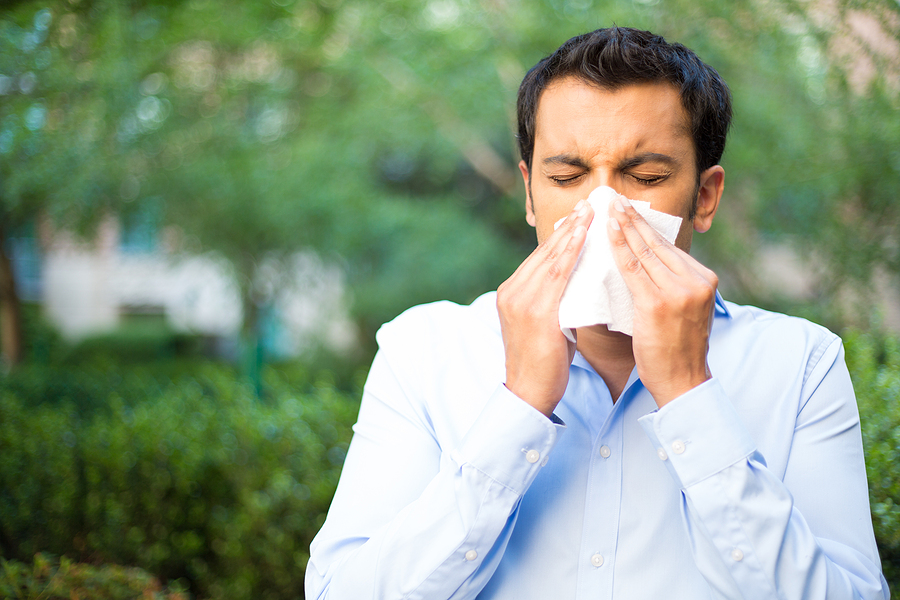The Role of Indoor Plants in Improving Air Quality for Allergy Sufferers
Posted By:SSG Admin Posted On:22-Nov-2024
In 1989, NASA released a study suggesting that indoor houseplants were the best way to filter the indoor air. People became convinced that houseplants are all it takes to make air in the home allergen-free. It’s not quite that simple.
Allergies are no fun, and homes are full of many common allergens. Whether it’s dust mites, mold, pet dander, or the pollen you carry in from outside. There’s more to ending your allergies than a few plants. Here’s what you should know about improving air quality in your home and easing your allergies.
The Results of NASA’s Study
They took 12 plants purchased locally and kept them in the same pot and potting soil. Water and Miracle-Gro were used to ensure the health of the plants. They proceeded to study how much benzene, formaldehyde, and trichloroethylene (VOCs) were removed from the surrounding air in a sealed chamber.
All of the plants removed these pollutants, but the Peace Lily, Warneckei, Dracaena, Variegated Snake Plant, and Marginata removed the most trichloroethylene. When it came to benzene, the English Ivy, Peace Lily, Marginata, Dracaena, and Golden Pothos were most effective. Bamboo Palm, Dracaena, Variegated Snake Plant, Marginata, and Peace Lily were best at removing formaldehyde.
The report led people to believe that houseplants were the solution to improving the air quality within a home. After all, it’s NASA. They’d have the equipment and experts needed to perfect this type of study.
Where the Study Went Wrong
The tests were completed in a sealed environment. Most family homes aren’t airtight so those pollutants don’t often build up. You have drafty windows, bathroom exhaust fans, and gaps around doors where VOCs escape.
The study didn’t look at the things that do trigger allergies, like pet dander and dust mites. It also didn’t consider that the damp potting soil that surrounds a plant’s roots can develop mold and mildew, which introduces an allergen to your home.
It also didn’t look at the basic principle of photosynthesis. Plants feed on the carbon dioxide in the air and release oxygen in return. That alone makes a plant worth owning, but don’t get a house plant thinking it rids your home of all concerns.
Tips for Finding the Best Houseplant for Your Needs
Houseplants don’t remove VOCs from the air, but they can boost oxygen. Plus, the greenery is soothing and can ease stress. For that reason, we recommend having houseplants.
If you want to add a houseplant to your home decor, look for one that matches your needs. If you don’t have large sunny windows, plants that need a lot of light won’t suit your home. If you have mold allergies, air plants that don’t require potting soil are best.
Tillandsia Xerographica is a well-known air plant that can grow as large as three feet. Its curly leaves stand out. Medusa’s Head is another option. It’s called Medusa’s Head as the leaves twist around each other and resemble snakes.
If mold allergies aren’t an issue, several plants are very easy to grow and maintain. Spider plants are one of them. They grow quickly. Plus, the shoots form babies that allow you to grow a second, third, fourth, etc. plant that you can share with friends or move to other rooms. They do need bright light, so make sure you have a sunny window.
We love aloe as it’s easy to grow. The sap inside an aloe leaf is also great for treating burns, eczema, and other skin rashes.
When you have a plant in a pot with soil, it needs water and fertilizer to stay healthy. When a plant grows too large, it needs a larger pot or to be divided into multiple pots. It’s a lot easier than you might imagine. The general rule is that if you see roots out of the bottom holes on a pot, it’s time for a larger pot.
When possible, get your plant from a local florist or greenhouse. It’s going to have the pollen that is already in the area. If you order online and have it shipped to your home, there’s the chance that you’ll introduce new allergens to your home.
What’s Better at Easing Allergies?
Have you considered an air purifier? Air purifiers remove microscopic particles from the air. Invest in at least one air purifier that matches the square footage of your living space. Make sure you change the filter as often as recommended to maintain the clean air.
Clean your home often. If you have carpets, mold spores, dust mites, pet dander, and pollen build up in the fibers. Even if you shampoo it regularly, it’s not going to remove 100% of these particles. Hardwood floors are better, but they still need to be cleaned often to remove dust, pet hair, and pollen.
Your sofa and chair upholstery also catches dust and allergens. You need to use an upholstery cleaner to remove them. Protective blankets and pet covers that you can put in the washing machine are helpful. Curtains are another item that captures dust and allergens. If you get machine-washable curtains, it’s easy to clean them on a regular basis.
When you go outside, remember that pollen is going to stick to your clothing. When you go inside, change into clean clothes. Put your clothes in the wash and avoid spreading pollen to your sofa and other furnishings.
In the end, a house full of plants isn’t going to help you as much as you might think. The best treatment for allergies starts with a trip to Premium Allergy & Respiratory Center. Allergen immunotherapy helps people with allergies find lasting relief from their symptoms by slowly introducing small amounts of the allergens that trigger your immune system.
There are three options when it comes to immunotherapy treatments for allergies.
- Subcutaneous (SCIT): Allergy shots given weekly for up to five years. The slow introduction of allergens allows your body to adjust and stop triggering a histamine response.
- Intralymphatic Immunotherapy: Allergy shots are injected directly into the lymph nodes. Fewer shots are needed, so you get three of them over a span of three months.
- Sublingual (SLIT): Instead of a shot, the allergen is placed under the tongue through a liquid drop or dissolving tablet. You need to take these drops or tablets every day for up to five years.
Imagine getting to go outside in the spring, have pets in your home, or go for a picnic without worrying about bees. Make an appointment today to learn more about allergy shots or sublingual (SLIT) treatments.





